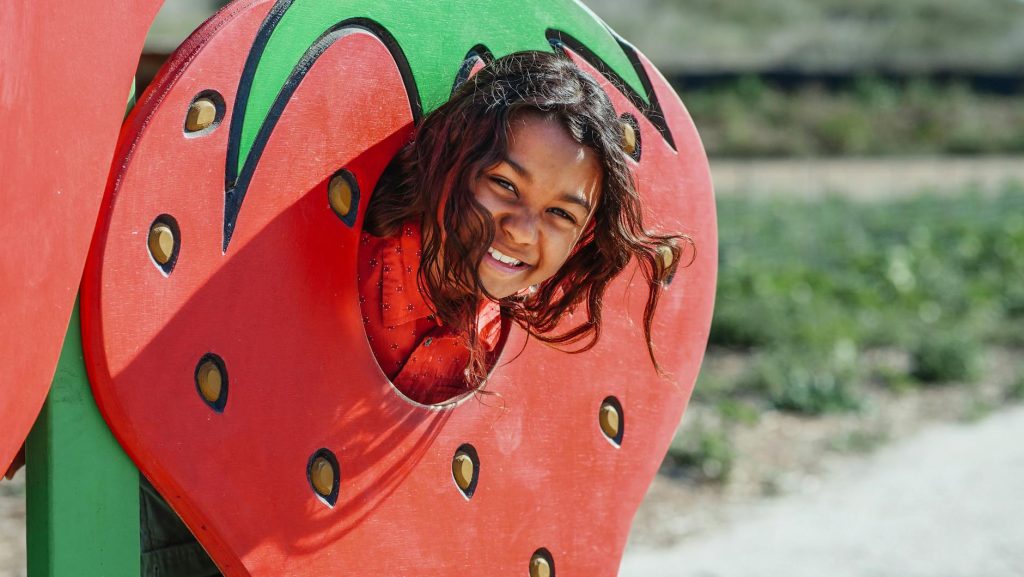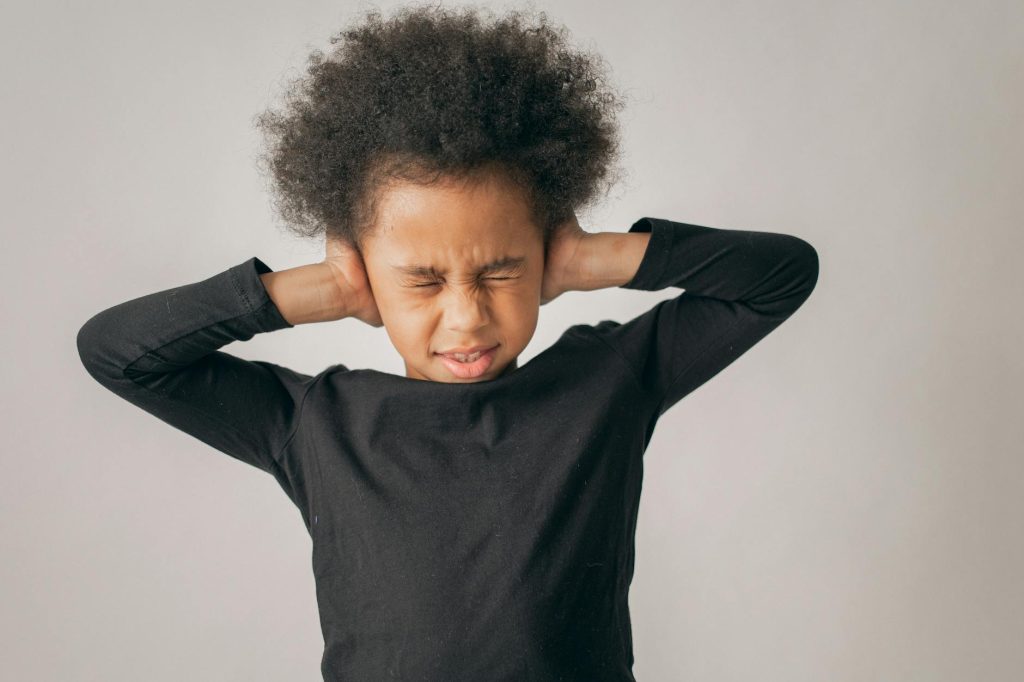You’re not imagining things.
Your daughter’s ADHD symptoms really do get better after she races around your backyard and dances like a wild thing in the living room. It’s not a coincidence, and it’s not magic. It’s science. Exercise for ADHD girls isn’t just about burning off energy—it helps their brains think, focus, and grow! Not only that, it improves coordination and helps regulate emotions. But this raises some questions:
- What kind of exercise?
- How much?
- What if she hates exercising?
That’s exactly what this blog is about. But first, let’s look at how exercise affects your daughter’s brain.
Physical activity and ADHD brains
Exercise has been huge. It wasn’t just to keep my weight down but to keep my brain active.
~~Katherine Ellison, award-winning ADHD author, journalist and speaker
While you’d think attention deficit would mean a lack of attention, it’s not that simple. Your daughter doesn’t lack attention. On the contrary, she has plenty. You’ve seen it; she’s enthralled with things that interest her. But she can’t focus on other things, like homework or chores. The thing is, ADHD brains are interest-driven, so she pays attention to things she enjoys. But physical activity activates her brain and helps her focus, even on less fun stuff.
Physical activity is a natural brain booster, especially for ADHD kids. And exercise for ADHD girls can be one of the most powerful tools to support their focus, mood, and brain development.
Here’s how it works:
- First, it gets your daughter’s blood flowing and raises her heart rate. This sends more fuel to her brain.
- Second, her brain makes less dopamine and norepinephrine, two chemical messengers that help with motivation, attention, etc. When she moves, those chemicals in her brain naturally increase.
- Exercise also raises her BDNF or brain-derived neurotrophic factor. BDNF supports memory, neuroplasticity, and brain growth.
ADHD girls need exercise as much as ADHD boys
Hyperactivity in girls may look very different from what we think about for boys. It could be hyperverbalization, excitability, or reactivity—this could be their version of hyperactivity.
~~Mary Anne Richey, School psychologist, ADHD coach, author and speaker
ADHD shows up differently in boys and girls. Young boys are parkouring off desks and climbing walls. In other words, you notice. They need exercise! But your daughter might not use her desk as a jungle gym. She might be a chatty, fidgety whirlwind or a quiet, daydreamy artist. But don’t overlook her movement needs. Regardless of her ADHD symptoms, exercise for ADHD girls is just as important. Because even if her body isn’t going a mile a minute, her brain is. Exercise gives her mental energy an outlet.
Benefits of movement

Moving supports your daughter’s body, brain, emotions, and long-term health. In other words, exercise isn’t just burning off energy or the wiggles. And it isn’t just another to-do. It’s a self-regulating ADHD support tool.
Mental benefits of exercise for ADHD
- Exercise improves your daughter’s executive functioning and reduces impulsivity.
- It increases her ability to focus, and she can pay attention longer.
- Physical activity enhances the benefits of ADHD medication. It can even reduce the amount she needs. Of course, check with her doctor before making any medication adjustments.
Physical benefits
- Exercise helps your daughter fall asleep faster and improves how well she sleeps. And the better she sleeps, the better she thinks!
- It improves her overall health and lowers the risks of obesity and future health problems.
- Improved body awareness and motor coordination reduce clumsiness.
Emotional benefits
- Exercise reduces the risks of anxiety and depression, which are common among ADHD girls.
- It improves her confidence and self-esteem. She feels more capable and independent.
- And physical activity helps regulate BIG emotions that seemingly come out of nowhere.
Social benefits
- Opportunities to strengthen her social skills
- Group sports or classes can lead to new friends.
- She learns to take turns and be a team player.
How much exercise does she need?

Overcoming resistance to exercise
Help your daughter create an exercise habit. As she keeps it up, the momentum builds. The more your daughter moves, the more she’ll want to move. But sometimes, starting is the biggest challenge. These tips can make exercise for ADHD girls feel more fun and less like a chore. Here are some common barriers to physical activity and ways to overcome them.
She doesn’t like exercise. Now what?
What if your daughter would rather lounge on the couch than go outside or exercise? That’s okay. Don’t make a big thing of it. To be fair, “Exercise” sounds boring, so reframe it. Instead of saying, “It’s time to exercise,” try, “Let’s have a dance party!” Sounds way more fun, right? Remember, her brain responds best to things that interest her. And a dance party totally counts as exercise!
She doesn’t like to exercise, and you don’t either!
But if you do something active together, it will motivate both of you and give you something to share. Interestingly, there is now an app that encourages parents to exercise with their children. Give it a free 7-day trial and see if it is for you. Outset—exercise designed for how your ADHD brain actually works.
She hates sports
Your daughter might hate sports. That’s fine! The truth is, your daughter doesn’t need to join a team or go to an exercise class. To get the benefits of movement, she just needs to move! So, create opportunities. Try a YouTube yoga video for kids. Have a wheelbarrow race in the backyard. Movement is movement! There are countless ways to make exercise for ADHD girls fun, flexible, and pressure-free.
Lack of time
Planning an hour of daily exercise feels daunting when you have a busy life and a full schedule. But here’s the thing, movement doesn’t have to be structured or happen all at once. You can naturallyincorporate physical activity throughout the day. It can be sporadic and spontaneous. Think of snack-sized movements. Something as simple as taking the stairs, morning stretches, or playing with the family dog.
You can involve your daughter’s teacher. Tell them you’re trying to increase your daughter’s activity and ask for their help. Studies suggest that a quick physical activity, like a set of jumping jacks, gives ADHD brains an immediate boost. So, ask if the class could move a little right before assignments or tests. Passing out papers or running notes to the secretary adds up, too!
Other challenges to exercising with ADHD
There can be ADHD-specific barriers to exercising, too.
Executive dysfunction
Your daughter can forget to move! Really. Or she might be unable to start moving, even if she wants to. ADHD makes it easy to forget what you need to do, and initiating things is challenging. She needs encouragement, and she’s looking to you. So, give her a little nudge. When you model an active lifestyle and move with her, you’re planting a seed for her future health.
Sensory processing challenges
Many kids with ADHD struggle with sensory processing issues. Sensations you hardly notice can deeply affect your daughter, making it hard for her to enjoy certain activities.

Common ADHD sensory challenges of physical activity:
Noise: A noisy gym, echoing locker rooms, or shouting.
Touch: Clothing that feels too tight, loose, or itchy.
Visual: Harsh lights, lots of activity
Temperature: Being hot and sweaty
Smell: Sweat, stinky clothes, chlorine, gym mats
Sensory interventions: Pick a quieter environment or offer earplugs or noise-canceling headphones.
- Help her pick out comfortable clothes, even if they aren’t “athletic wear.”
- Choose a less busy or familiar environment where she feels more in control.
- Make sure she takes breaks and drinks lots of water.
- Try quick-drying fabrics to prevent damp, uncomfortable clothes.
What kind of exercise is best for ADHD?
All exercise is good exercise!However, different activities benefit some ADHD symptoms more than others. Let’s take a closer look.
Exercises for inattentive ADHD:
Your daughter is a dreamer and easily distracted.
What to try:
Calming, creative activities, and steady aerobic exercises support focus and improve working memory.
Examples:
- Gentle dance or gymnastics: structured classes and rhythmic activity
- Horseback riding: builds focus and emotional connection.
- Yoga or mindful movement: calming body awareness
- Swimming: increases focus with rhythmic repetition
- Martial arts (non-competitive): structured, builds confidence and discipline.
- Nature walks or hikes – soothing, low-pressure outdoor aerobic activity.
Exercises for hyperactive-impulsive ADHD:
Your daughter is on the go! She’s chatty, fidgety, and always up for adventure!
What to try:
Fast-paced activities that keep her interested and moving. Burning off excess energy helps her regulate and reduce impulsivity. It also strengthens focus and social skills.
Examples:
- Soccer, basketball, or flag football: running and teamwork
- Parkour or obstacle courses: fun and interesting, full-body workout
- Trampoline parks or bounce gyms: fun, high-energy exercise
- Dance (hip-hop or freestyle): creativity, expression, fun, and physically demanding
- Track and field activity: burns energy while developing focus and discipline
- Martial arts: increases focus and improves impulse control
Exercises for combined-type ADHD:
Your daughter craves novelty and adventure! But she also struggles to stay focused and motivated.
What to try:
Offer a mix of steady and high-energy exercises based on your daughter’s preferences. This combination supports focus and emotional control while keeping her motivated.
Examples:
- Teams sports: fun, build teamwork and social skills
- Adventure (zip-lining, etc.) exciting, improve discipline and focus
- Dancing or cheerleading: high-energy, builds social relationships
- Skating (roller or ice): rhythm and repetition, full-body movements
- Group fitness classes for kids: maintains interest and improves social skills
- Martial arts: physically demanding, increases body awareness and discipline
These are only guidelines, though. Try different activities. See what sticks, but don’t get stuck. Remember, the best exercise is always the one your daughter does and wants to do again. It doesn’t matter what it is. She just needs to move!

All progress matters and the biggest thing you can do is encourage her. Let her have fun! No pressure to succeed, win, or perform.
Celebrate progress and keep going!
Activity doesn’t need to be structured or perfectly planned to be effective. For starters, your daughter can crab-walk across the living room. Even if she moves for 5 more minutes today than yesterday, that’s progress. And it matters. With ADHD, movement is a tool for self-regulation. When you encourage your daughter to be active, you’re helping her build life-long healthy habits.
Want more content like this? Subscribe to our monthly newsletter!
About the Author

Alex Alcon
Alex Alcon, RN, Freelance nurse content and copywriter, owner of RN2Pen LLC.

Cynthia Hammer, MSW
Cynthia Hammer, MSW, is an ADHD advocate helping girls get timely diagnoses. She's the founder of FINDtheADHDgirls, Executive Director of Inattentive ADHD Coalition, and author of Living with Inattentive ADHD.
Share via:

